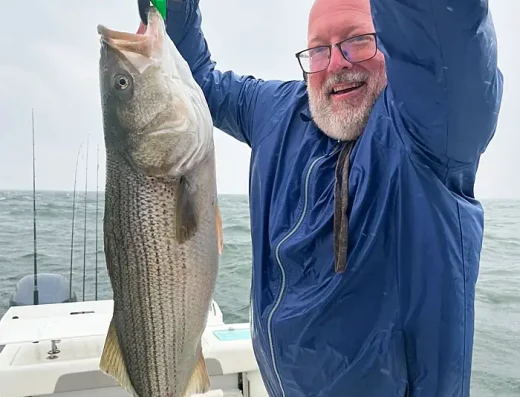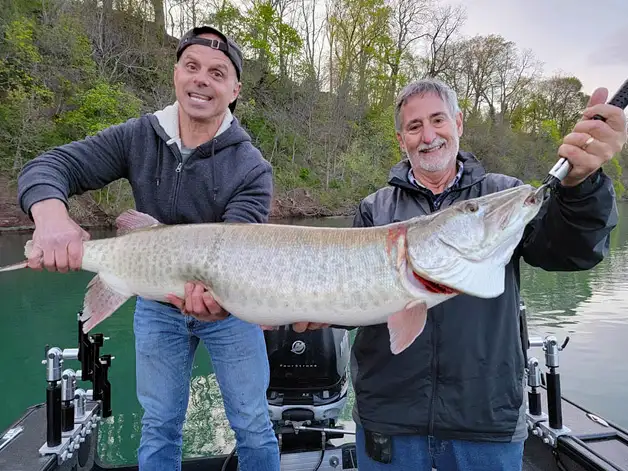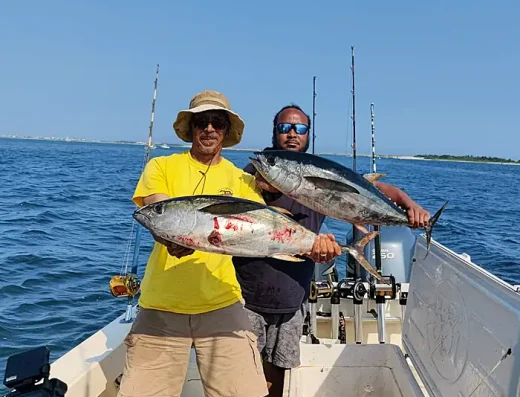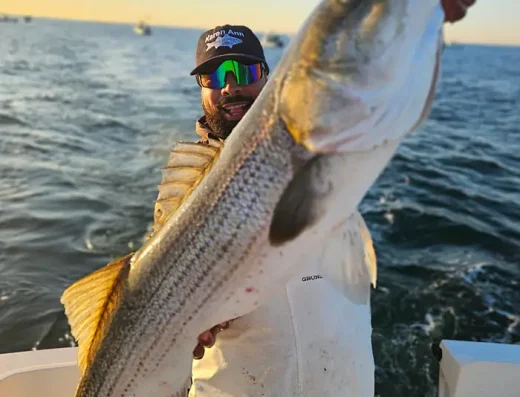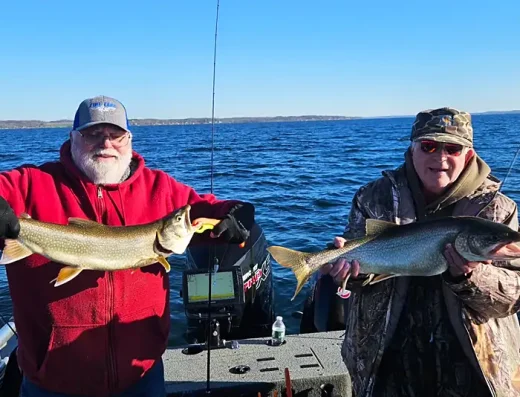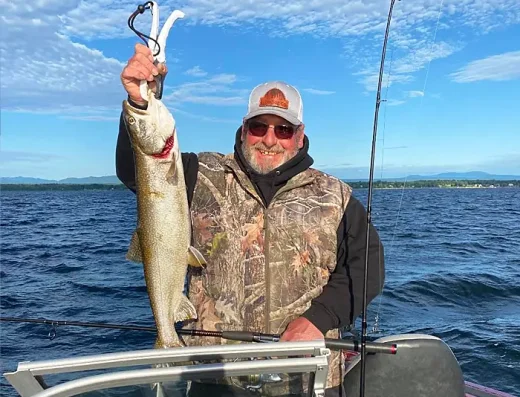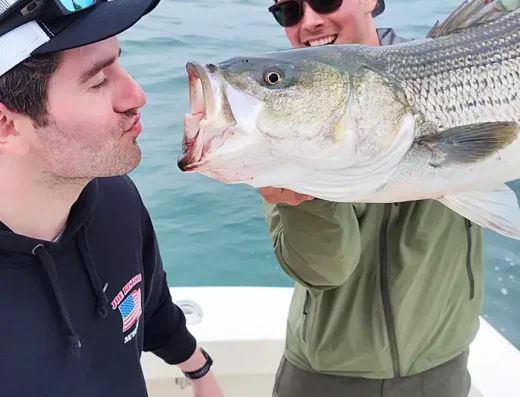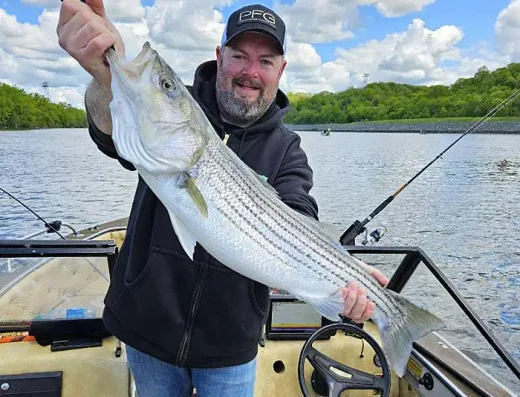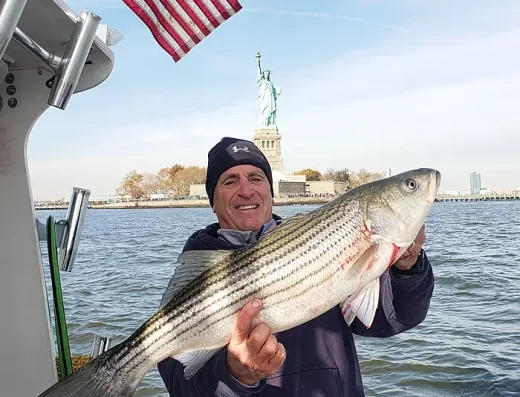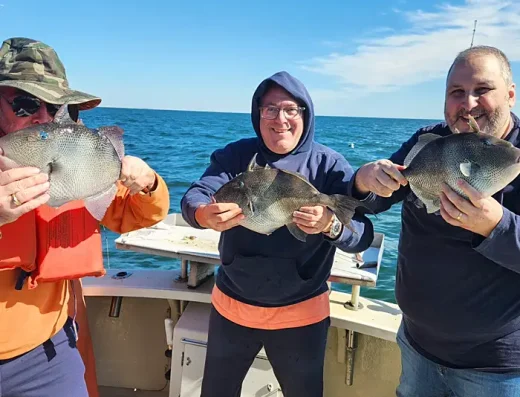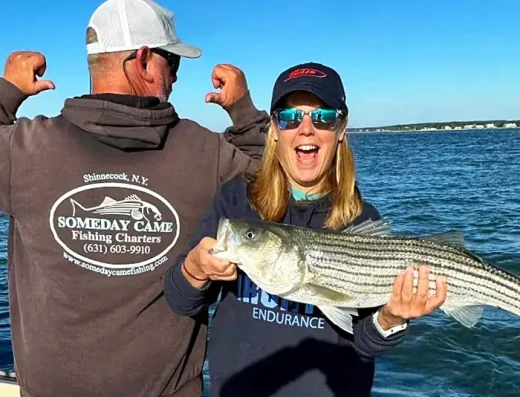New York Fishing Charters
New York fishing charters cover everything from deep sea wreck trips off Long Island to fly casting for wild browns in the Catskills and jigging lake trout on the Finger Lakes.
TrustedFish connects anglers with proven local captains in New York —no commissions, no pay-to-play listings, no BS. Every charter on our platform is invite-only, vetted for skill, local knowledge, and reputation. If they’re listed, they’ve earned it.
Top Rated Charters in New York
Click to View Destinations
New York Fishing Guide
New York’s waters are all over the place—in a good way. You’ve got salty runs off Montauk and the Rockaways, tidal brackish zones in Jamaica Bay and the Hudson River, and serious freshwater setups in the Finger Lakes, Lake Ontario, and way up north near the St. Lawrence. Saltwater charters mostly run out of Long Island, especially out east near Montauk, Shinnecock, and Orient Point. Half-day runs chase porgies and fluke close to shore, but full-day offshore trips head 20–70 miles out for tuna, mahi, and sharks when conditions allow. Standard offshore spread is skirted ballyhoo or spreader bars on the troll. Wreck and reef fishing closer in is all about bait—clam, squid, or green crab depending on target.
Inland, you’ve got lake guides working year-round on Oneida, Seneca, Canandaigua, and the big dog: Lake Ontario. Late spring through fall is trolling season for browns, cohos, and kings—dipsey divers, downriggers, spoons, and cut plug herring are the name of the game. Come winter, it’s ice fishing time on places like Chautauqua and the northern bays. Don’t skip the rivers either—the Hudson holds decent striped bass in spring, and the Salmon River near Pulaski runs hot with steelhead, kings, and cohos from fall into winter. Fly guys live upstate, especially around the Delaware, Beaverkill, and Esopus. Hoppers and streamers early, nymphs and eggs later. You can fish New York year-round if you’re willing to move and adjust your target.
Regional Fishing Highlights
Long Island Sound & South Shore
From City Island down to Montauk, saltwater charters target a rotating mix of stripers, blues, fluke, sea bass, scup, and blackfish. Most boats run out of Freeport, Sheepshead Bay, or Montauk Harbor. Nearshore trips drift bucktails or bait over reefs, while fall brings blitzing schools of bass and albies. Tautog season gets surgical—green crab, tight to wrecks, with a feel for the bite or you’re donating sinkers.
Upstate Finger Lakes
Guides work lakes like Seneca, Cayuga, and Keuka for lake trout, rainbows, and landlocks. Most trips troll deep water with downriggers and spoons. Spring sees good shoreline casting with blade baits and jerkbaits for smallmouth. Ice fishing in winter draws locals to tip-up setups and jigging raps. Early mornings, light wind, and structure edges are key.
Lake Ontario & Salmon River
Come late August, salmon stack up at the mouths of rivers like the Salmon and Oswego. Charter boats run trolling spreads offshore early, then the action moves inland as fish push upriver to spawn. Big king salmon hit egg sacs, skein, or plugs. Steelhead and browns stick around longer—light tackle, floats, and patience get the job done.
Catskills & Upper Delaware
Fly anglers know this stretch for wild browns, rainbows, and technical hatches. Guides float drift boats down the West Branch, East Branch, and main stem Delaware casting dries to sipping trout. Mid-April to mid-June is prime for hendricksons, sulphurs, and caddis. Summer means terrestrials and tight-line nymphing. Leave the indicators at home.
Fishing Seasons in New York
Spring
Striped bass move into the Hudson and Long Island bays as the water climbs into the 50s. Flounder season kicks off around the same time. Upstate, trout fishing opens with stocked browns and rainbows, plus wild fish in the Catskills. Early-season trolling on the Finger Lakes is productive. April to early June is when kings start showing up on Lake Ontario.
Summer
Saltwater’s wide open—fluke, sea bass, porgies, blues, and schoolie bass. Offshore runs out of Montauk chase yellowfin and bigeye when warm water edges get close. In the lakes, you’re trolling deep or fishing early and late. Night bites for walleye on Oneida or jigging for lakers in 80–120 feet. Trout fishing slows unless you head to spring-fed rivers or deeper pockets.
Fall
Peak salmon time. Kings pour into the Salmon River late August through October, followed by cohos, then steelhead. Montauk lights up with the fall run—bass, blues, and albies crashing bait. Blackfish season opens up and the bottom fishing crowd shifts gears. In the lakes, perch and walleye get more active as temps drop.
Winter
Hardwater season kicks in. Lake George, Chautauqua, and smaller Finger Lakes freeze over for perch, walleye, and lake trout. Salmon River still holds chrome—steelhead on jigs, beads, and egg flies. South shore cod trips happen when the weather cooperates. You’ll want layers, creepers, and a backup auger.
Most Popular Gamefish in New York
- Striped Bass – 20–45 lbs. Bays, beaches, and inlets spring and fall. Bunker chunks, live eels, or topwaters at dawn.
- Bluefish – 5–15 lbs. Summer and fall chasers nearshore. Metals, poppers, and chunk baits.
- Fluke – 3–10 lbs. Summer bottom drifting with bucktails and Gulp over sandy bottoms.
- Yellowfin Tuna – 30–100+ lbs. Summer canyon trips out of Montauk. Trolled spreader bars or chunking.
- King Salmon – 10–30 lbs. Lake Ontario and rivers in fall. Troll spoons or float egg sacs.
- Steelhead – 6–12 lbs. Fall through spring in Salmon River. Float fishing or bottom bouncing egg patterns.
- Lake Trout – 5–20 lbs. Deepwater trolling on Finger Lakes and Ontario. Cowbells, spoons, jigging raps.
- Smallmouth Bass – 2–6 lbs. Summer on rocky lake points and rivers. Tubes, jigs, or topwaters.
New York Fishing FAQs
Do I need a fishing license in New York?
Yes. Freshwater fishing requires a NY State license. Saltwater anglers must register (free) with the Marine Registry. Charter clients are typically covered by the boat.
When’s the best time to fish Lake Ontario?
May through September is prime for trolling salmon and trout. Kings stack up late summer and move toward rivers by fall.
What kind of bait is best for blackfish near Long Island?
Green crab on a single hook or snafu rig is standard. Use just enough weight to hold bottom and keep contact.
Can you catch tuna in New York?
Yes, mostly out of Montauk in summer. Yellowfin, bigeye, and even some bluefin show up around the canyons and temperature breaks.
Are there guided fly fishing trips in the Catskills?
Plenty. Drift boat and walk-in guides run the West Branch, East Branch, and Upper Delaware. Prime time is April through June.
What’s biting in New York City waters?
In spring and fall, striped bass and bluefish come into Jamaica Bay, the East River, and around the Rockaways. Summer’s good for fluke and porgies.
Is ice fishing popular in New York?
Very. Chautauqua, Oneida, and the Finger Lakes see a lot of hardwater action. Perch, walleye, lake trout are the usual targets.
What tackle should I bring for a Lake Ontario salmon trip?
If not chartering, bring trolling gear—wire or copper setups, dipsey divers, downriggers, and spoons or cut bait rigs. Heavy-duty rods and line.
Can kids go on New York fishing charters?
Most nearshore and lake trips are family-friendly. Offshore runs are longer and rougher, so check with the captain ahead of time.

